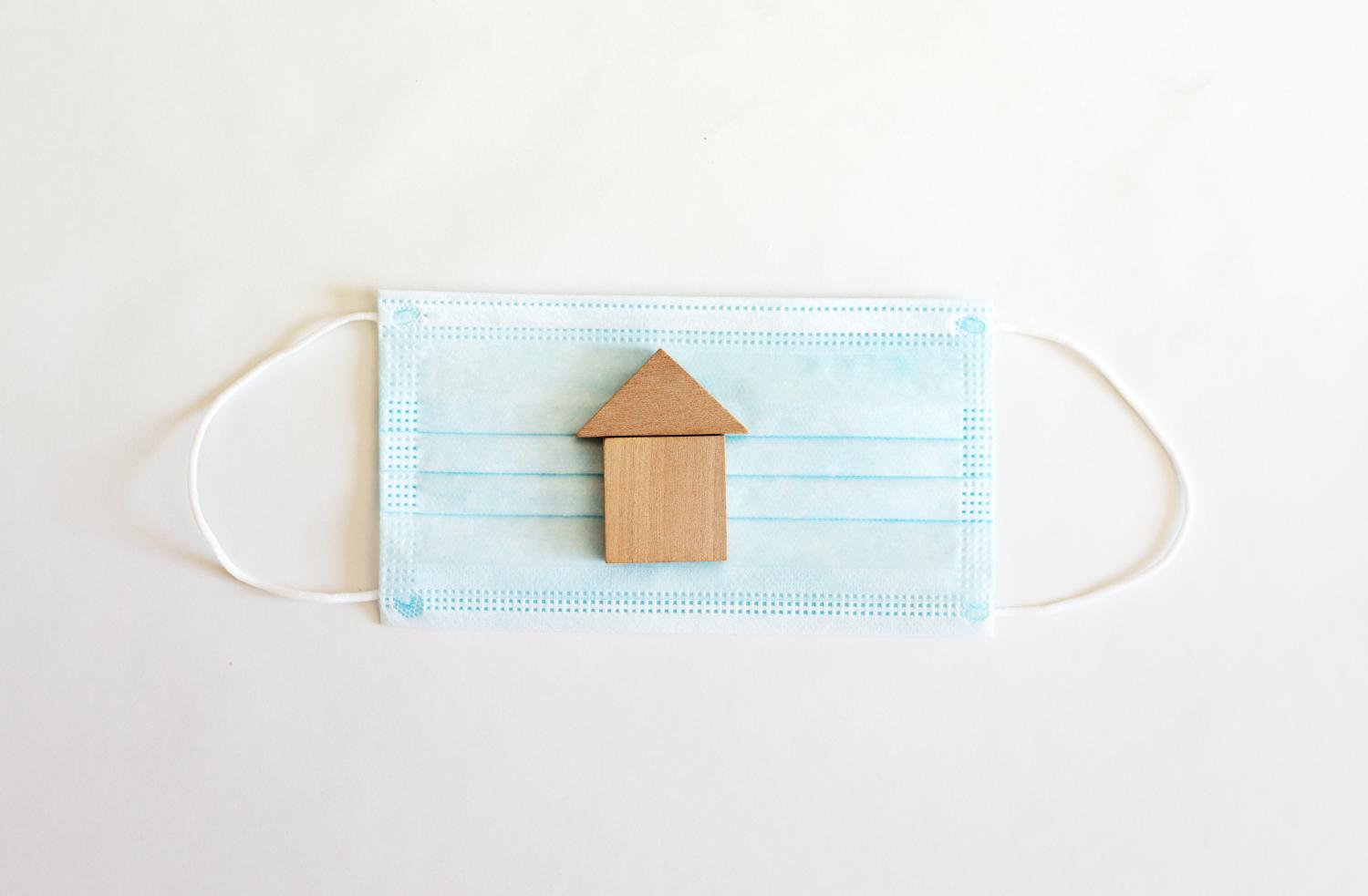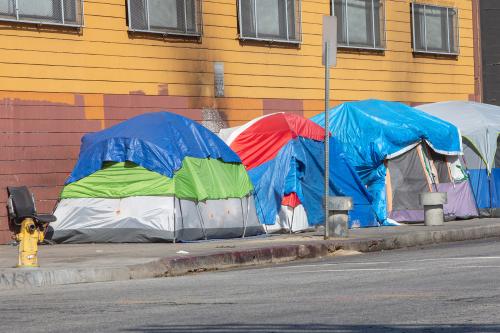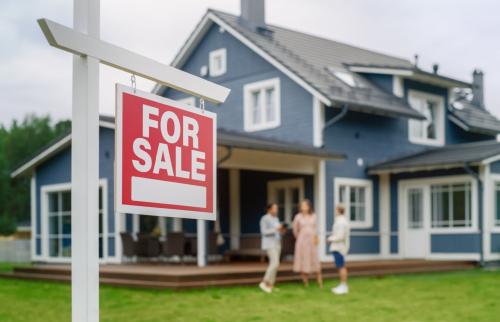The paper summarized here is part of the Fall 2021 edition of the Brookings Papers on Economic Activity (BPEA), the leading conference series and journal in economics for timely, cutting-edge research about real-world policy issues. The conference draft of the paper was presented on September 9, 2021 at the Fall 2021 BPEA conference. The final version was published in the Fall 2021 edition by Brookings Institution Press on June 7, 2022. Read all papers published in this edition here» Submit a proposal to present at a future BPEA conference here»
Massive government-mandated and private-sector debt relief during the COVID-19 pandemic was well-targeted and helped mute economic distress for millions of Americans, finds a paper discussed at the Brookings Papers on Economic Activity (BPEA) conference on September 9.
About 60 percent of borrowers who entered debt forbearance have exited it as of May, but an important policy question looms for how to deal with any remaining “forbearance overhang,” particularly for mortgages, if mandated forbearance expires as scheduled at the end of September, write the authors—Susan Cherry and Amit Seru of the Stanford Graduate School of Business, Erica Jiang of the University of Southern California, Gregor Matvos of Northwestern University, and Tomasz Piskorski of Columbia University.
In Government and private household debt relief during COVID-19, the authors studied forbearance using a representative credit bureau panel of more than 20 million U.S. consumers. They estimate that, between March 2020 and May 2021, more than 70 million consumers with loans worth $2.3 trillion entered forbearance, missing $86 billion of their payments. During that period, 6.3 million mortgages, 11 million auto loans, 68 million student loans, and 62 million revolving loans (such as credit cards) were in forbearance.
Government mandates account for about 80 percent of debt relief during the pandemic but about 20 percent (for larger mortgages, auto loans, and revolving loans) was provided voluntarily by the private sector, according to the paper. Debt relief was automatically extended to all federal student loan recipients, but mortgage and other types of borrowers had to ask for it. This self-selection feature resulted in a better-targeted policy for mortgages, according to the authors.

“We find that debt relief reached its intended target, since forbearance rates are higher in regions with the highest COVID-19 infection rates and the greatest local economic deterioration,” they write.
The question now, especially for mortgage loans still in forbearance, is how borrowers can repay their arrears manageably. The authors estimate that, by the end of September, the forbearance overhang for all loan types will amount to more than $70 billion and, for mortgages, to about $15 billion (or $14,200 per borrower).
They suggest two solutions for mortgages. First, missed payments could be added to the existing loan balance, which would allow borrowers to spread out repayment over the remaining life of the loan, which averages about 25 years for borrowers in forbearance. Second, borrowers with federally insured mortgages could be allowed to refinance at current low-mortgage rates and add missed payments to their new loan balance.
Seru, in an interview with The Brookings Institution, said he worries that some lenders, particularly non-banks, known as shadow banks, have less capacity and experience than other lenders to modify mortgages. He suggested that it may take additional government action, such as more guidance from the government-sponsored mortgage insurers Fannie Mae and Freddie Mac. Guidance permitting only limited discretion to lenders would promote a uniform approach, he said.
“I do worry that unwinding will be problematic because there is no one size fits all,” he said. “If there is no clear mandate on what unwinding entails, you will see different lenders behaving differently, as we showed was the case during the Great Recession. Some lenders will say, ‘Look, we can’t handle this, we must foreclose.’”
Acknowledgments
David Skidmore authored the summary language for this paper. Becca Portman assisted with data visualization.
Citations
Cherry, Susan, Erica Jiang, Gregor Matvos, Tomasz Piskorski, and Amit Seru. 2021. “Government and Private Household Debt Relief during COVID-19.” Brookings Papers on Economic Activity, Fall. 141-199.
Noel, Pascal. 2021. “Comment on ‘Government and Private Household Debt Relief during COVID-19’.” Brookings Papers on Economic Activity, Fall. 200-210.
Wachter, Susan. 2021. “Comment on ‘Government and Private Household Debt Relief during COVID-19’.” Brookings Papers on Economic Activity, Fall. 210-218.
Conflict of Interest Disclosure
The authors did not receive financial support from any firm or person for this article or from any firm or person with a financial or political interest in this paper. They are currently not an officer, director, or board member of any organization with an interest in this paper.










